They were each originally sandwiched between a small piece of glass and card backing but had started to disintegrate with age.
These pictures show really clearly the potential damage that could be caused by the acids and lignin in the old backing materials... The foxing has left a clear imprint of the image on the backing card, and if the paintings had been on ordinary paper and not rice paper, they would have also been already foxed and brown and in need of restoration!


All the new materials used for conservation framing are acid neutral and archival grade. The tape we use to attach the art to the undermount is an archival cotton rag gum tape with no wood pulp at all. It is activated with distilled water and can be carefully removed in the same way with no damage to the artwork.

This picture (above) shows the tabs of cotton rag tape attached with minimal contact to the back of the rice paper, and a tiny repair to strengthen a slight split which could have grown.

And here is shown the 'T-hinge' method of attaching to the undermount, again all with cotton rag tape. Attaching only at the top allows the paper to breathe, expand and contract, and this type of hinge has strength whilst having the minimal amount of tape in contact with the artwork.
 We mounted the rice paper paintings with conservation grade mount card which is acid neutral and protects and supports both the back of the artwork from the acids in the backing board, and the front from contact with the glass. The top mount and the undermount are hinged with more archival tape...
We mounted the rice paper paintings with conservation grade mount card which is acid neutral and protects and supports both the back of the artwork from the acids in the backing board, and the front from contact with the glass. The top mount and the undermount are hinged with more archival tape...
 Finally it was carefully fitted behind Tru-vue conservation glass which filters out 99% of the harmful UV rays that would fade the beautiful colours in the paintings (Although it is still not recommended to hang in direct sunlight!)
Finally it was carefully fitted behind Tru-vue conservation glass which filters out 99% of the harmful UV rays that would fade the beautiful colours in the paintings (Although it is still not recommended to hang in direct sunlight!)
This type of conservation framing should protect and conserve artwork for a minimum of 20 years and is No. 2 of the Five Levels of Framing set out by the Fine Art Trade Guild.
So there you are - I hope it's given an interesting insight into framing for conservation!

This picture (above) shows the tabs of cotton rag tape attached with minimal contact to the back of the rice paper, and a tiny repair to strengthen a slight split which could have grown.

And here is shown the 'T-hinge' method of attaching to the undermount, again all with cotton rag tape. Attaching only at the top allows the paper to breathe, expand and contract, and this type of hinge has strength whilst having the minimal amount of tape in contact with the artwork.
 We mounted the rice paper paintings with conservation grade mount card which is acid neutral and protects and supports both the back of the artwork from the acids in the backing board, and the front from contact with the glass. The top mount and the undermount are hinged with more archival tape...
We mounted the rice paper paintings with conservation grade mount card which is acid neutral and protects and supports both the back of the artwork from the acids in the backing board, and the front from contact with the glass. The top mount and the undermount are hinged with more archival tape... Finally it was carefully fitted behind Tru-vue conservation glass which filters out 99% of the harmful UV rays that would fade the beautiful colours in the paintings (Although it is still not recommended to hang in direct sunlight!)
Finally it was carefully fitted behind Tru-vue conservation glass which filters out 99% of the harmful UV rays that would fade the beautiful colours in the paintings (Although it is still not recommended to hang in direct sunlight!) We 'sandwich taped' the glass and mounted art together to prevent dust, insects and other airbourne pollutants getting in, as well as sealing the back of the frame with paper gum tape.
This type of conservation framing should protect and conserve artwork for a minimum of 20 years and is No. 2 of the Five Levels of Framing set out by the Fine Art Trade Guild.
So there you are - I hope it's given an interesting insight into framing for conservation!
Perhaps if it is of interest I will do a future post all about restoration... Watch this space!



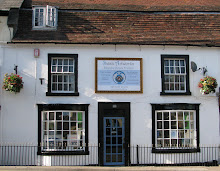






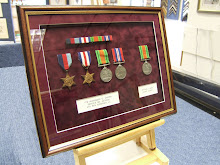

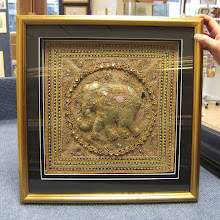
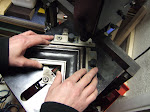
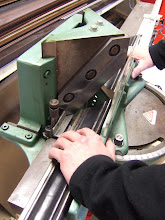

No comments:
Post a Comment